I know what you’re thinking. “Wait a second, you’re telling me to stop stockpiling water?” That’s right. And before you grab your pitchfork or unsubscribe from every prepping newsletter you’ve ever signed up for, hear me out. I’ve been in this game a long time, and I’ve made my fair share of mistakes. Heck, I used to be the guy with shelves lined with plastic jugs and five-gallon drums stacked three high in the garage. But over the years, I’ve learned a few hard truths about water storage—and why it may not be the prepping strategy you think it is.
Let me tell you why stockpiling water might be the most overrated—and potentially dangerous—habit in the prepping community.
The Problem with Stored Water
Let’s start with the obvious: water is heavy, bulky, and awkward to store. A single gallon weighs about 8.34 pounds. Multiply that by the FEMA recommendation of one gallon per person per day, and you’re looking at hundreds of pounds just to cover your family for a couple of weeks.
Now add in pets, sanitation, cooking, and any unexpected guests, and suddenly your “water stockpile” is barely a drop in the bucket. And that’s assuming your storage containers don’t spring a leak, grow algae, or develop a funky taste that makes even the most hydrated among us gag.
I remember one summer; I went to rotate my water storage—something we all say we’ll do but rarely follow through with—and found out that two of my 55-gallon drums had gone rancid. That’s 110 gallons of useless space-hogging sludge. Not exactly the insurance policy I had in mind.
The False Sense of Security
Stockpiling gives people the illusion of preparedness. But here’s the thing: emergencies are unpredictable and rarely go the way we imagine. It’s easy to feel confident when you’ve got rows of water bottles lined up in the basement, but what happens when the lights stay off longer than expected? Or when you realize that burst pipe in your neighborhood wasn’t just inconvenient—it was the start of a water contamination crisis that could last weeks?
Sure, your water stockpile might get you through a short-term event. But what about a long-term grid-down scenario? A wildfire that scorches the land and poisons nearby streams? A hurricane that floods your entire town and turns every fresh source into a toxic stew? Or worse, a full-blown societal collapse where clean water becomes the most valuable currency?
If your entire water plan hinges on a few jugs in your pantry, you’re setting yourself up for failure. You’ll be the guy who was “ready” until day six, when everything ran out and the local creek—filled with runoff and god-knows-what—became your only option. You’re on your knees, trying to remember the instructions on that dollar store life straw you bought two years ago, hoping you can sip without getting sick. And you’ll be kicking yourself for not thinking bigger, for not planning beyond the bottle.
The Better Solution: Water Self-Reliance
So, if I’m not stockpiling water, what am I doing? I’m preparing to source and purify water—anywhere, anytime.
Here’s the deal: water is everywhere. Rain, rivers, lakes, even the humidity in the air. Your job as a prepper isn’t to hoard it, it’s to know how to find it, clean it, and make it safe to drink. That’s true water security.
I’ve invested in:
- A high-quality gravity-fed filtration system (Berkey, Alexapure—you name it)
- Portable water filters and purification tablets
- A rainwater catchment system with first-flush diverters
- DIY knowledge on solar stills, sand filters, and boiling methods
These tools and techniques give me the confidence that I can always get clean water—no matter where I am or what’s going on. That’s what being a true prepper is all about: adaptability and resilience.
But this can quickly become expensive. So, what about a solution for less? There are actually many.
 A personal favorite of mine is actually recommended by fellow Ask A Prepper author and survivalist Michael Major. In His No Grid Survival Projects book, he presents a very simple and highly-effective pressurised rainwater harvesting and purification system. And this is not good for you, there is also a 3 Bucket Water Filter project that teaches you how to build a water filter in 30 minutes with just 3 empty buckets (pictured).
A personal favorite of mine is actually recommended by fellow Ask A Prepper author and survivalist Michael Major. In His No Grid Survival Projects book, he presents a very simple and highly-effective pressurised rainwater harvesting and purification system. And this is not good for you, there is also a 3 Bucket Water Filter project that teaches you how to build a water filter in 30 minutes with just 3 empty buckets (pictured).
There is even a project that allows you to make water out of thin air. Picture the scenario in which you did all 3 projects mentioned. You can get water when it rains, from the air around you, and you can filter it so it is safe for drinking. This is what self-reliance means.
See the list of survival systems plans in the No Grid Survival Projects book here!
Think Mobile
Let’s talk bug-out scenarios. Nobody really wants to leave their homes. But…sometimes there is NOTHING we can do about it.
If you ever have to leave home fast, are you really lugging 30 gallons of water in your bug-out vehicle? Of course not. You’ll need space for food, gear, weapons, fuel, and your family. Water’s just not going to make the cut.
Instead, I’ve got a compact filtration kit in every go-bag, vehicle, and camping setup I own. If I find a stream, I’ve got water. If it rains, I’ve got water. If I can scavenge from a pond, mud puddle, or even a toilet tank, I’ve got water. And it won’t weigh down my escape plan. And you can find some of these even at your local hardware store. Once again, you have to be prepared for every scenario, including the forced bug-out.
Storage Still Has Its Place
Now don’t get me wrong—I’m not saying to toss every jug you’ve got into the trash. Short-term storage is smart. Having 3-5 days of clean water per person on hand can be a lifesaver during local disasters or boil-water advisories. But stop acting like a few blue barrels in the garage make you invincible.
Instead of stacking jugs to the ceiling, start thinking like a homesteader. Learn how to:
- Collect and filter rainwater
- Identify local water sources on a map
- Test water for contamination
- Purify water using charcoal (learn how to make your own here), boiling, UV light, or chemical methods
If you know how to make water safe, you’re ten steps ahead of the guy with a hundred gallons of tap water slowly turning to slime in his basement.
Final Thoughts: Get Smarter, Not Heavier
Prepping isn’t about collecting—it’s about planning. And the plan that works today might not work tomorrow. Don’t let your water strategy become your blind spot.
Stop hoarding. Start learning. Turn your focus from stockpiling to sourcing, from fear to skill, from dependency to independence.
Read books like The Lost Superfoods and The Self-Sufficient Backyard. Knowledge is your biggest weapon, no matter what happens.
Because when the day comes—and it will come—you won’t be the guy with a mountain of stale water and no way to get more.
You’ll be the one who knows what to do next.
Stay sharp out there.
You may also like:
 Is Harvesting Rain Water Illegal in Your State?
Is Harvesting Rain Water Illegal in Your State?
How to Test Your Water to See if It’s Still Safe to Drink (Video)
Similar to Morphine: The Best Natural Painkiller that Grows in Your Backyard (Wild Lettuce)
How Much Water You Should Store for Your Family

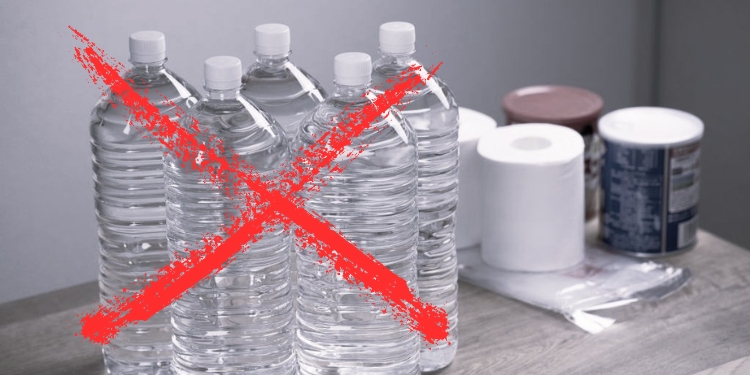
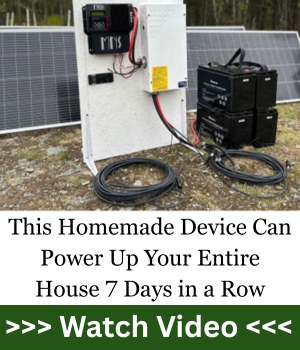
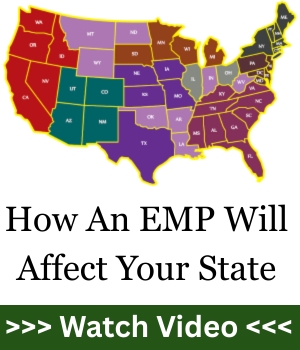

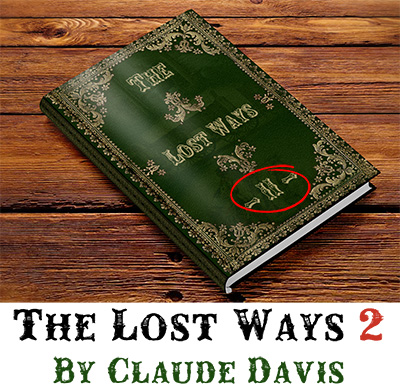




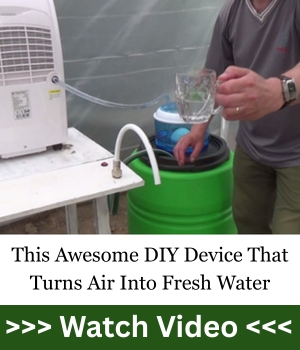




Matt, I already had my pitch fork and was ready for a fight over this one. Then I realized we have some common ground. I keep and will continue to keep some water stored but a person should put more emphasis on being able to treat water from streams, lakes, springs, or shallow wells. Even the stored water (if it tastes funky) should be salvageable by running it thru the Berkey and maybe chlorinating or boiling it. My post several weeks ago centered on having several pretreatment options so the water would be in the best condition possible before I put it thru the Berkey and I will continue to promote that idea. What you may have nudged me to do is to get out and find more sources of water in my area because I will want to use the least contaminated one during tough times.
From what I understand, the Berkey company does not make their filters anymore. There’s another company that uses the Berkey name but it’s not the same filter.
Life in any form can’t exist without water.Period.
To say otherwise is just plain silly and hopefully no one reading this article takes it seriously.
Even old punky water has a use.Can you say barter??
This is one of those”come on man” articles designed to
get the the readers attention and then sell a book.
I have to question the honesty and integrity of the author.
Obviously you did not read the article before commenting.
my thoughts exactly
There are hundreds of memoirs from Vietnam combat veterans, a common story is deploying for weeks at a time into the jungle and drinking water from muddy tropical streams purified with a couple of purification tablets dropped into the canteen. It’s just not that hard to make water safe to drink. I always have 5000 gallons of water in an aboveground swimming pool, the only chemical that goes in is chlorine. In an emergency we’ll quit swimming in it, it will get all green and funky but all you have to do is filter it through an old t shirt and boil it a few minutes over a rocket stove. Then add some Koolaid to fix the taste, just like the old veterans did.
Howdy from high in the desert swamp,
I was caught somewhat off guard a couple weeks ago. A fire hydrant broke off below grade. Water was shut off until repairs could be made. No water for 8 hours. I used one 5 gallon jug for sink bath and toilet tank refills. I have a filter, and it was full. That did make me rethink my water situation. Again. I bought two more jugs. That will last a couple days. It made me think on where and how to get water? Also, the who. I have a river about 200 yards away. Using buckets and a wheelbarrow will work. I can get water from there, bring home and clean it. Now the thought is what is between me and the water and back? Some of these people are real jerks. Some I don’t know and don’t know about outsiders cruising to scavenge. I spoke with one man about this I trust. We both concluded this will be a two man job. Where and how is covered. Who, might be people waiting to take what I have. Either on the way back or an invasion. I have said on here many times, clean water will be what makes people desperate enough to take yours by force. Now we had another hydrant break off. Apparently the freeze we had was enough to damage already uninspectable water lines. The hydrant being most vulnerable. This will most likely happen again. If the system goes down for some reason I have had two events to make me think. Is the person whose yard I have to go through going to charge me a toll? Do I go another 1/4 mile to the park? Who do I take with me? Who do I escort? This is a very real/actual scenario because it has happened twice. The county fixed it quickly but happens when they don’t?
I am not a young man and the thoughts are not pleasant but they are real. This will get ugly which furthers my point:
in all preparations make certain your soul is prepared.
Well, like most folks, I will, and am NOT going to stop with water storage… and Yes, I did do more than 2 tours in Viet Nam drinking muddy water… I live rurally and am on a community water system, and do have a well as well as a spring on my property… I already have a couple of different filtration systems, to include a Berkly system… I also have the makings of a rain catch system… and I do live in an area that is surrounded by lakes and streams so I don’t think that water will be an issue for me… It would be the city folks, and that would be my children who would have water issues, eventually… Live long and prosper…
The article brings up a good point about knowing how to filter water. But I’m still keeping some on hand that I know is potable and easily accessible.
For a time, we lived in a place where we had a well which was too deep to access via hand pump or solar jack. The first several years we lived there, we lost power every third storm. No power meant no well. It didn’t take long for me to learn to keep water on hand. Most of the outages weren’t long, but I learned to keep one bathtub scrupulously clean and filled it when the third storm was forecast. We used that water to flush toilets, clean dishes and clothes, mop floors, wash hands, and refill pet dishes. A few times, we used it for drinking for ourselves.
The jugs of water were easier to handle than scooping out water from the bathtub. In inclement weather, we didn’t have to go outside to fetch water.
Where we live now, we have access to many water sources and a way to filter it. I still keep water on hand, and I do rotate it through to keep the water fresh.
The jugs are handy to take with us if travelling, boating, or camping. Even if end up needing to filter water, the jugs are handy to use as water storing receptacles.
Pitch fork heck, I had the old army boot on! However, i kinda knew what you were eluding too when I first started reading. Storing water really is for short term only. I think most preppers realize that to be sustainable long term we need to get better at water filtration systems. Now to get real, is affordability. Not everyone can afford the big hitters. Nor do they have the room for some of the other options.The new water filtering straws can connect a water bottle to them so as to continuously filter larger amounts of water to share instead of a lone drinker. Thanks again for the great food for thought!
Good article. I have several 5 gallon jugs that I rotate to keep fresh all for short term. Also have dry pool chlorine for use in shtf along with activated charcoal to filter with sand. I also have 2 dehumidifiers to provide water out of the air and the ability to filter as noted above and solar to power those in an electricity outage. As the article points out, multiple ways to collect and clean water will keep you alive.
Why did Berkey stop making filters?
AI Overview
Berkey stopped making Black Berkey filters after the U.S. Environmental Protection Agency (EPA) issued a Stop Sale, Use, or Removal Order (SSURO) in late 2023, citing concerns about the filters’ unregistered use of silver and non-compliance with the Federal Insecticide, Fungicide, and Rodenticide Act (FIFRA).
Here’s a more detailed explanation:
EPA’s Concerns:
The EPA’s SSURO stemmed from concerns about the Black Berkey filters’ claims about their filtration capabilities and the unregistered use of silver, which the EPA classifies as a pesticide.
FIFRA Non-Compliance:
The EPA determined that the Black Berkey filters were not in compliance with the Federal Insecticide, Fungicide, and Rodenticide Act (FIFRA), which regulates the registration, distribution, sale, and use of pesticides in the United States.
Stop Sale Order:
As a result of these concerns, the EPA issued a stop sale order, halting the sale or distribution of the Black Berkey filters.
Berkey’s Response:
Berkey International, the manufacturer of the filters, has stated that they are contesting the EPA’s decision and are in the process of legal action.
Alternative Filters:
BOROUX, a company that previously formulated the carbon-based filters, has introduced new EPA-compliant water filtration solutions as replacements for the Black Berkey filters.
we keep 6 5 gallon jugs of water and 8 1 gallon jugs of water for immediate use. the generator is a dual fuel type and we have close to a dozen propane bottles that will last us quite a while. we also got a new well bucket from lemans supply ( i think its called). our well is 250 ft deep and using the well bucket would really suck, but we have it if necessary. the pool holds 13000 gal of water which would really help. the water we keep on hand gets rotated every 6 months and a few drops of bleach get put into each container. this is a good article with alot of good info.
I was a corpsman in the Navy. There are many ways to purify water. Have you ever tasted water that was purified with iodine tablets? Not the best-tasting water in the world, but it was safe to drink.
The most surefire way to purify water is by filtering out the debris and boiling out the pathogens. You don’t need any chemicals if you can do that. Just make sure you’re drinking fresh water and not salt water. Otherwise, you’ll have to figure out how to distill the salt out of it.
Yo Knuckleheads Johnny Rose and Cygnet A.Brown.
For the best information on storing as much water as
possible for as long as possible take a look at an article
posted recently on ModernSurvivalBlog titled
“PREPPER MISTAKES”.
All water is valuable.New water old water mud puddle
water.
When the SHTF I assume that you will have some folks
to take care of. Don’t let them down!!!
Pull your head out of your ass.Don’t believe bullshit.
You STILL did not read the article!
Please don’t treat me like the creature from Frankenstein 1931 (no pitchforks)But I feel that water will one day be like gas. Regulated and sold please again no pitchforks
My 35,000 gallon in ground pool is water survival strategy. In the winter it’s about half filled (still 15-17,000 gallons) so the water isn’t getting chlorinated as much (have supplies on hand to do so). The key is filtration. Every drop coming out will be boiled and filtered. Yes it means bugging in, but as a disabled veteran, I never really thought I would be bugging out anyway. Still i have BOBs just in case.